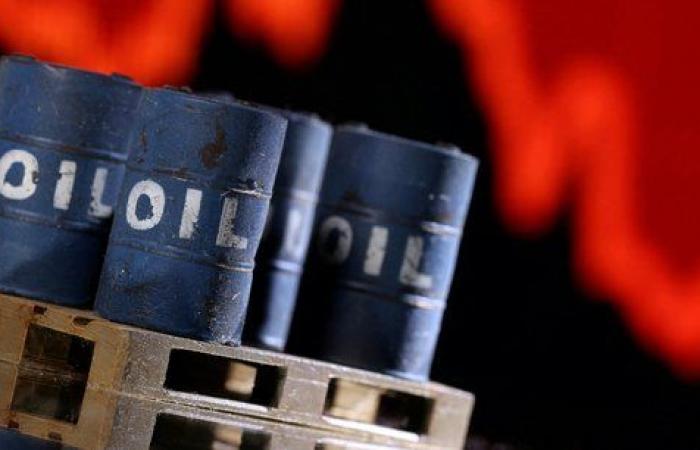Oil prices start the week down. Around 11:30 a.m. Paris time (10:30 a.m. GMT), the price of a barrel of Brent from the North Sea, for delivery in January, lost 0.47%, to $74.82. Its American equivalent, the barrel of West Texas Intermediate (WTI), for delivery the same month, for its part gained 0.58% but is displayed at a much lower level, at $70.83.
Brent thus remains close to its highest since the American election. This is due to the escalation of the war between Russia and Ukraine last week. Tensions were reignited by the authorization granted to kyiv by the United States to use long-range American missiles on Russian territory. This caused oil prices to rise.
The fact remains that the oil market is currently considering this escalation of the conflict, just like that concerning that in the Middle East, “as phenomena of temporary support” to oil prices, according to Tamas Varga, analyst at PVM.
The Shadow of Trump
Investors' indecision is rather explained by the fact that global supply excluding OPEC+ (the organization of oil exporting countries and its allies) is expected to exceed demand next year, according to forecasts from the International Energy Agency. Energy (IEA). “About 1.1 million barrels per day”recalls Kartik Selvaraju, analyst at Rystad Energy.
Oil: the IEA confirms that it anticipates a period of overproduction from 2025
Particularly because of Donald Trump's return to power in the United States. Since the Republican is a strong defender of fossil fuels, the market expects favorable conditions for American oil companies. Which would lead to even more abundant production from Uncle Sam's country.
Scott Bessent, possible American Secretary of the Treasury in the Trump administration, also indicated to Wall Street Journal its desire to increase production by 3 million barrels per day. The IEA therefore expects the United States to be the main contributor to the increase in supply from non-OPEC+ countries.
Crucial OPEC+ decision
And this surplus could be even more pronounced. OPEC+ actually meets on Sunday and could “implement its plans to restore previously interrupted production”said John Plassard, analyst at Mirabaud, on Friday. As a reminder, at the beginning of November, eight members of the organization, including Saudi Arabia and Russia, announced an extension of their oil production cuts until the end of December.
Oil: eight OPEC+ members extend their production cuts until the end of December
This decision was taken in order to maintain a relatively high price level and not flood the oil market. “What OPEC is aiming for is a price of around 80 to 90 dollars per barrel: above 90, this would allow the energy transition to take place more quickly and below 80, that would not be the case. “do not balance their accounts”, Thierry Bros, energy expert and professor at Sciences Po, recently explained to La Tribune. For the moment, “the consensus is on continued cuts” of 2.2 million barrels, says Kartik Selvaraju.
However, if the organization reverses this decision, the consequences could be significant. There would then be a risk “massive oversupply” of oil next year, “which should lead to a significant drop in prices”recalled Barbara Lambrecht of Commerzbank in a note. End of suspense in six days.
(With AFP)






